


This article examines the cost differences between ordinary and equivalence clinical trials in Mexico, emphasizing that equivalence studies typically incur higher expenses due to additional regulatory demands and complexities. These costs often exceed $30,000 per participant. Such a conclusion is supported by detailed analyses of various cost components—including:
demonstrating how these factors contribute to the overall financial implications for sponsors planning clinical research in Mexico.
The landscape of clinical research in Mexico presents a fascinating dichotomy between ordinary and equivalence trials, each with distinct financial implications. As sponsors navigate the complexities of these studies, understanding the nuanced cost differences becomes essential for effective budgeting and planning.
However, with equivalence trials often incurring significantly higher expenses due to stringent regulatory requirements and extensive patient recruitment strategies, how can sponsors optimize their investments while ensuring compliance and efficiency?
This article delves into the financial intricacies of both trial types, offering insights that can empower stakeholders to make informed decisions in the evolving field of clinical research.
bioaccess® leverages its extensive experience and regional expertise to enhance research processes in Mexico. By utilizing local regulatory speed and diverse patient groups, bioaccess® significantly reduces the time and highlights the cost difference ordinary vs equivalence Mexico associated with research studies.
With over 50 sites activated in under 8 weeks and a proven track record in FDA/EMA/MDR compliance, bioaccess® has earned a reputation for delivering ethical approvals in just 4-6 weeks—substantially faster than traditional markets. Their commitment to comprehensive acceleration for global studies, which includes overseeing Early-Feasibility, First-In-Human, Pilot, Pivotal, and Post-Market Follow-Up Research, ensures that they consider the cost difference ordinary vs equivalence Mexico to keep the research timeline expedited and economical.
This makes Mexico an increasingly attractive destination for medical investigations.
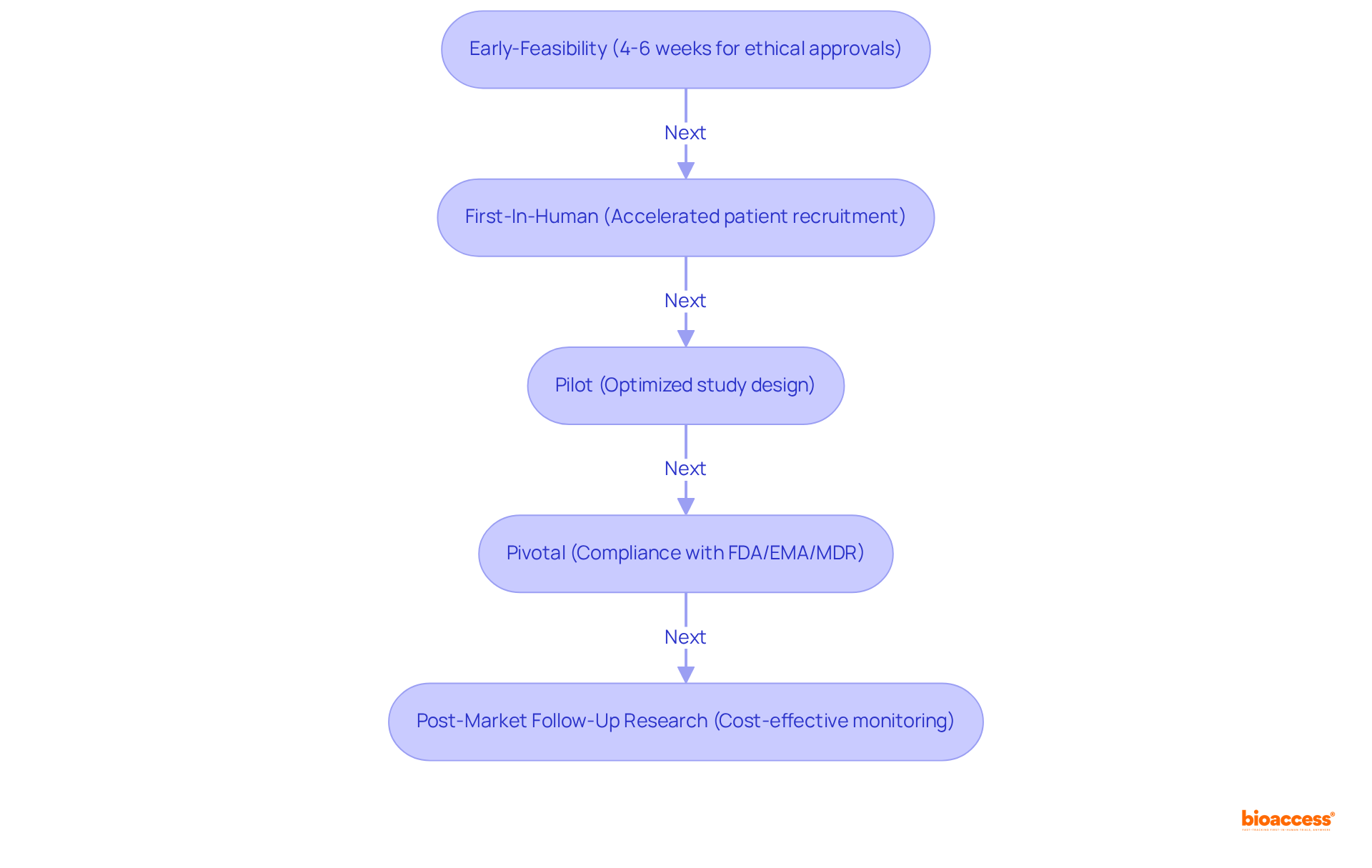
Standard research trial expenses in Mexico typically range from $15,000 to $25,000 per participant, depending on the complexity of the study and the therapeutic area. These costs encompass a variety of charges, including:
Although these figures are lower than those found in the U.S. and Europe, they still represent a substantial investment for sponsors. Understanding these expenses is essential for effective budgeting and financial planning in clinical research.
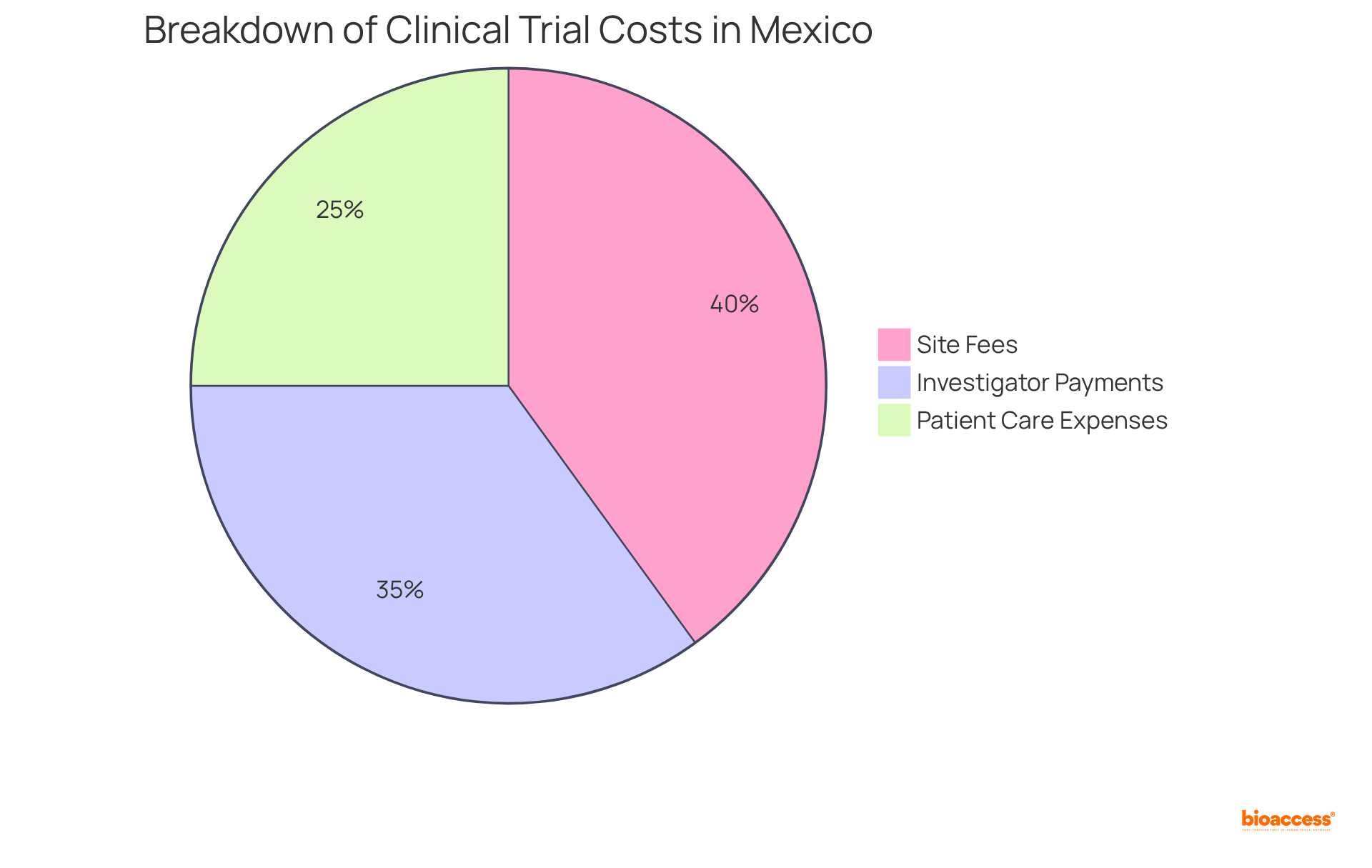
The cost difference ordinary vs equivalence Mexico often results in equivalence studies incurring higher expenses than standard studies, primarily due to the additional regulatory demands and complexities involved. These studies typically require more extensive patient recruitment strategies and longer study durations, which contribute to the cost difference ordinary vs equivalence Mexico that can exceed $30,000 per participant. The necessity for rigorous statistical analysis and adherence to specific regulatory standards further escalates the cost difference ordinary vs equivalence Mexico.
Given bioaccess's expertise in managing clinical studies—including Early-Feasibility, First-In-Human, and Pivotal Research—sponsors can effectively leverage their comprehensive clinical study management services to navigate these challenges. This includes:
All of which are crucial for the success of equivalence studies. When planning equivalence studies, sponsors must carefully consider the cost difference ordinary vs equivalence Mexico among other factors.
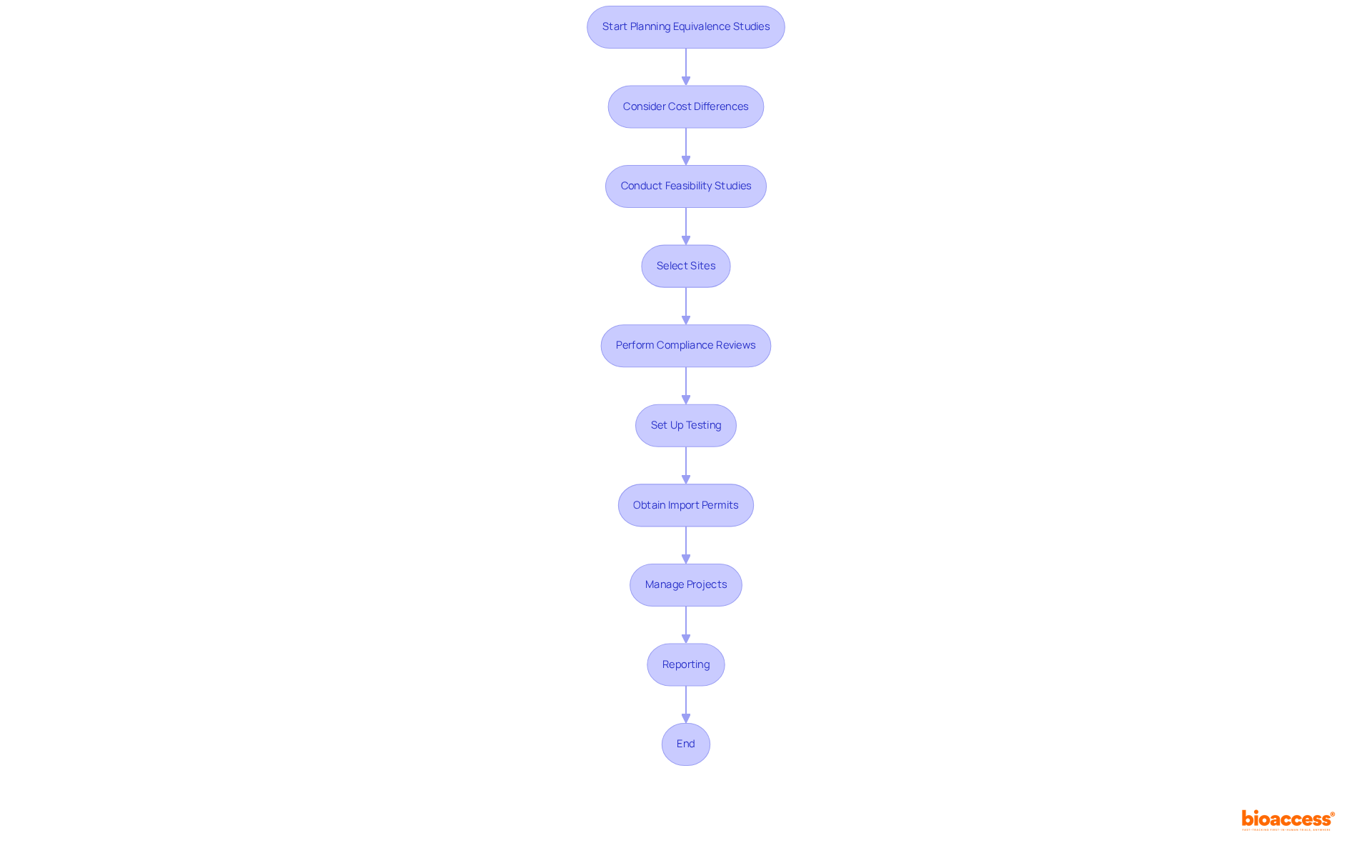
The cost difference ordinary vs equivalence Mexico in regulatory expenses can vary considerably based on the nature of the study and the specific stipulations set forth by COFEPRIS, the Mexican regulatory authority. Charges associated with submitting experimental applications, amendments, and other regulatory documents can accumulate to several thousand pesos, with each amendment costing approximately 3,500 Mexican Pesos. Additionally, sponsors must factor in potential costs related to insurance and indemnification for participants, which can further impact the overall budget. To navigate these complexities, bioaccess® offers a comprehensive suite of services designed to streamline processes and effectively manage regulatory costs.
Together, these services facilitate a smoother journey to case initiation and empower sponsors to manage regulatory expenses efficiently.
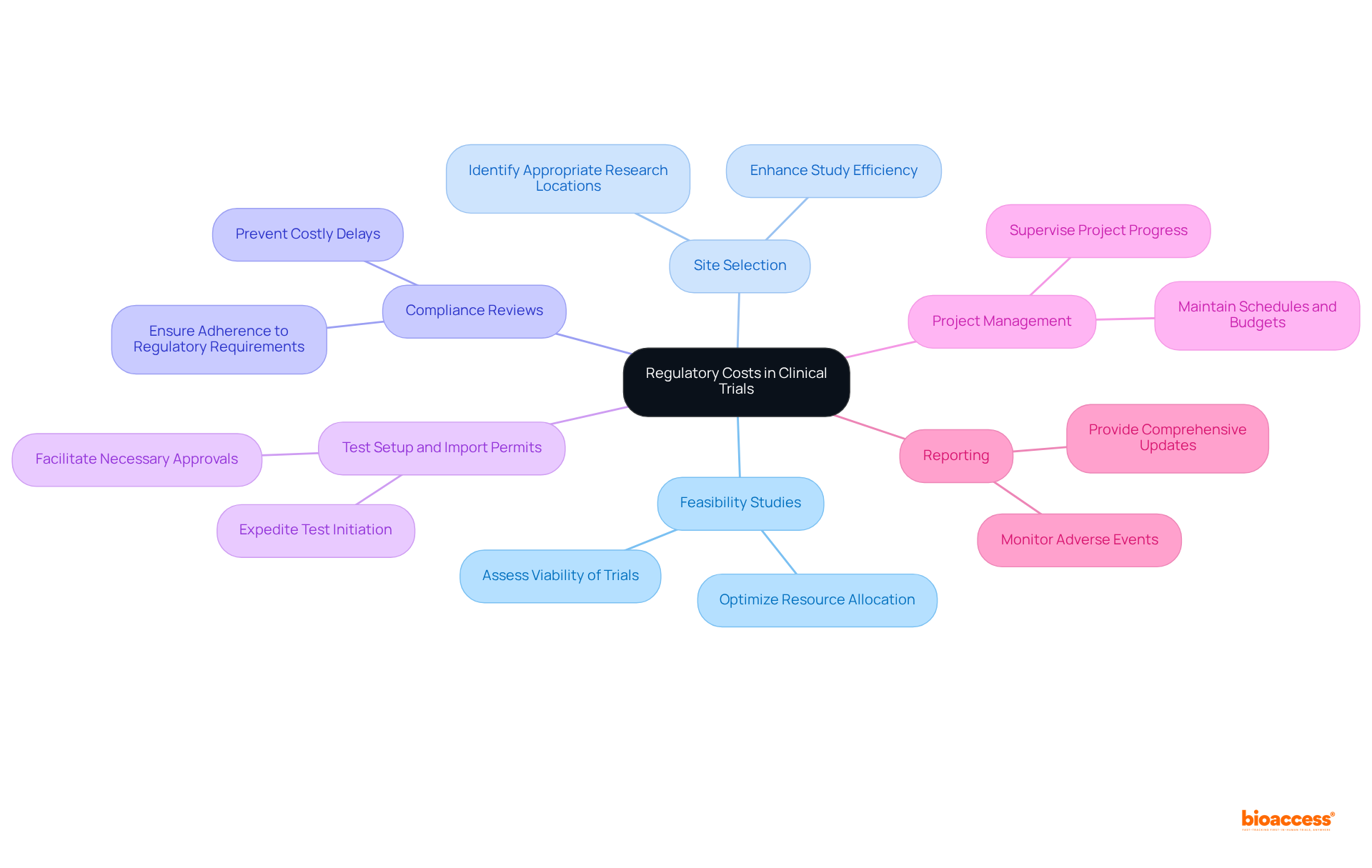
Patient recruitment expenses represent a significant portion of clinical study budgets. In standard studies, hiring expenses typically range from $15,000 to $25,000 per patient, influenced by the therapeutic area and recruitment methods employed. Conversely, the cost difference ordinary vs equivalence Mexico often leads to higher recruitment costs for equivalence studies, frequently exceeding $30,000 per patient, due to the necessity for more stringent inclusion criteria and larger sample sizes.
To mitigate these expenses, efficient hiring strategies such as:
can be instrumental.
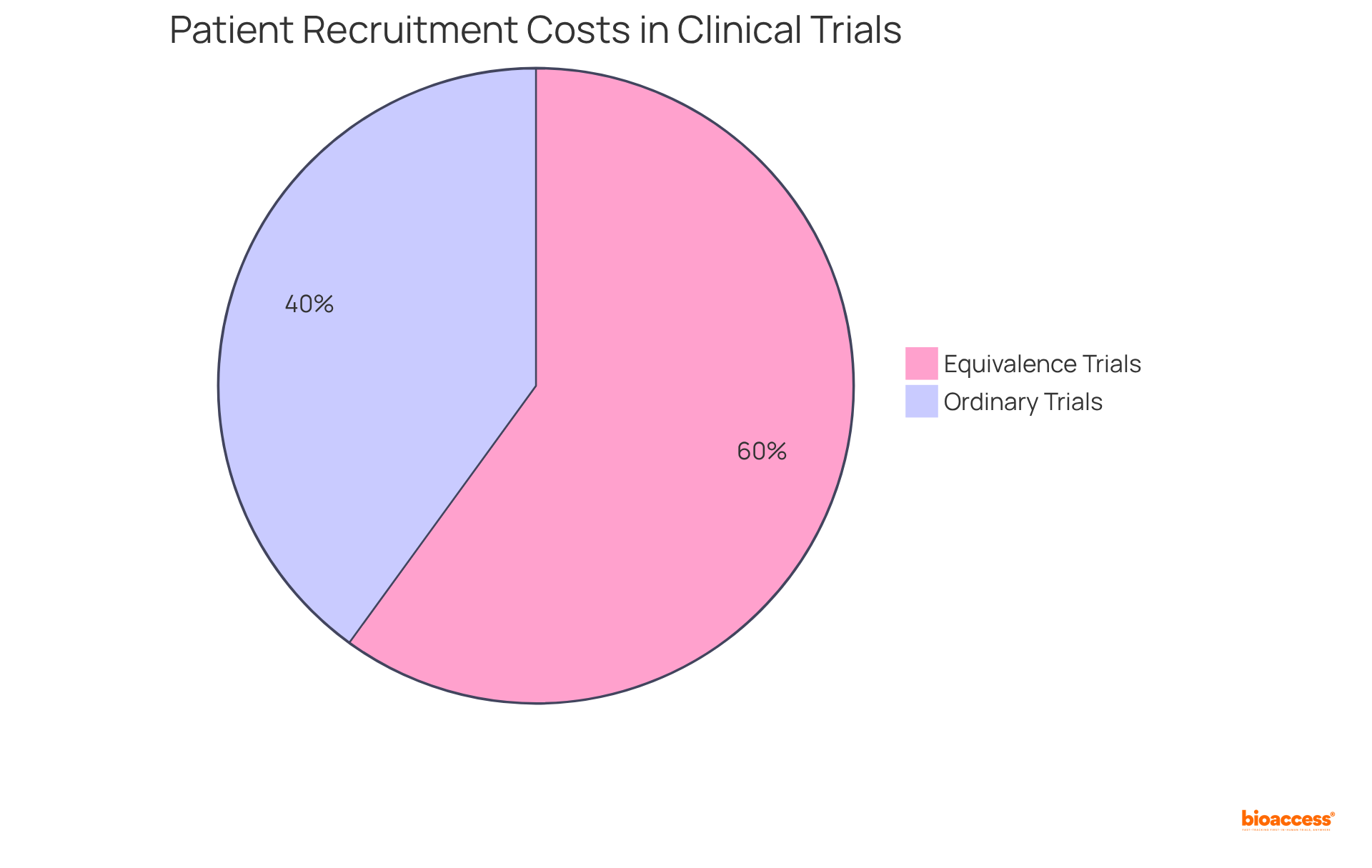
Operational expenses in clinical studies encompass a range of expenditures, such as location management, employee salaries, and equipment costs. Typically, common experiments incur lower operational expenses, averaging between $10,000 and $15,000 for each location. In contrast, the cost difference ordinary vs equivalence Mexico may cause operational expenses in equivalence studies to rise to $20,000 or more per site, necessitated by additional monitoring and compliance measures. It is crucial for sponsors to thoroughly evaluate these expenses during study planning to ensure financial viability.
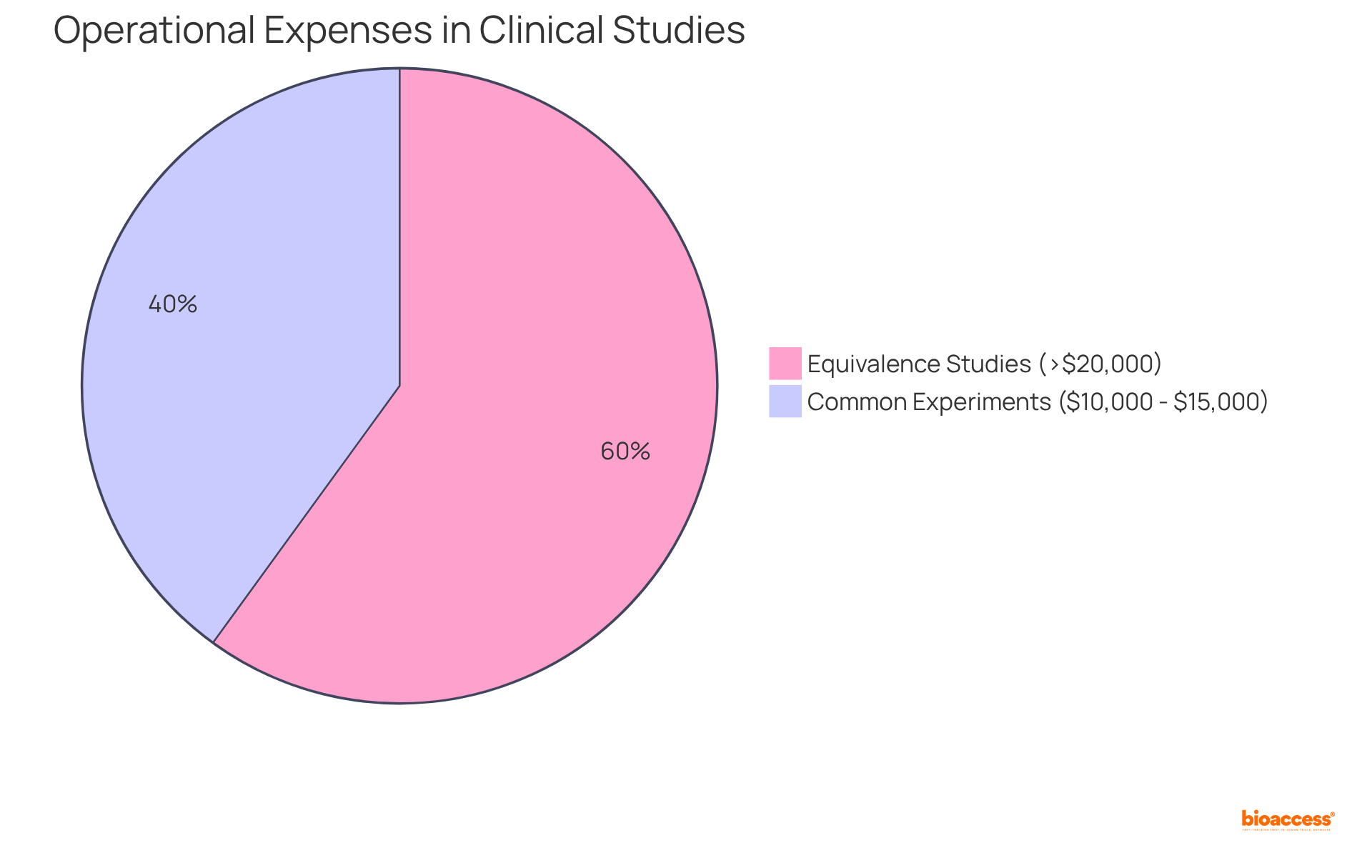
Site management expenses highlight the cost difference ordinary vs equivalence Mexico, which reveals considerable disparities between regular and equivalence experiments, a critical aspect of clinical research.
For standard studies, costs typically range from $5,000 to $10,000 per location, influenced by the complexity of the research. In contrast, the cost difference ordinary vs equivalence Mexico indicates that equivalence studies frequently incur higher expenses, averaging $15,000 or more for each location. This increase stems from the enhanced oversight and strict compliance with regulatory requirements essential for these studies.
Sponsors must meticulously assess these expenses when developing their overall trial budgets to secure adequate funding for effective site management.
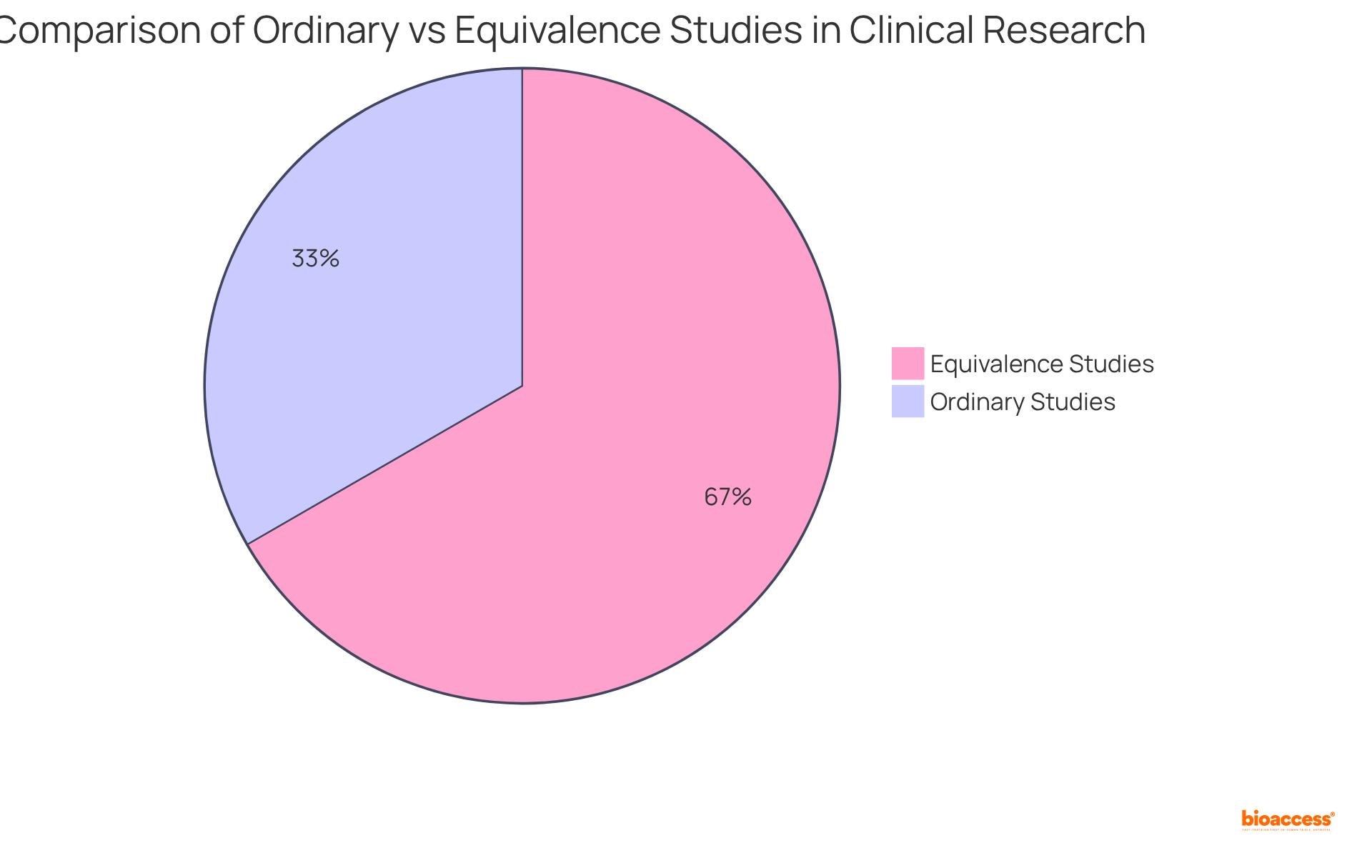
Local collaborations significantly impact clinical research expenses in Mexico. By partnering with local contract research organizations (CROs), healthcare providers, and academic institutions, stakeholders can achieve notable savings through shared resources and expertise.
For instance, bioaccess® has demonstrated its effectiveness in accelerating patient recruitment and site activation services, achieving over a 50% reduction in recruitment duration and 95% retention rates in its studies. These collaborations not only enhance patient recruitment efforts but also streamline regulatory procedures, ultimately reducing the overall costs of conducting studies.
Furthermore, initiatives like the partnership between bioaccess™ and the Caribbean Health Group to position Barranquilla as a leading site for research studies in Latin America, supported by Colombia's Minister of Health, exemplify how strategic alliances can enhance study outcomes.
Sponsors should actively seek local collaborations to improve their budget efficiency and optimize results.
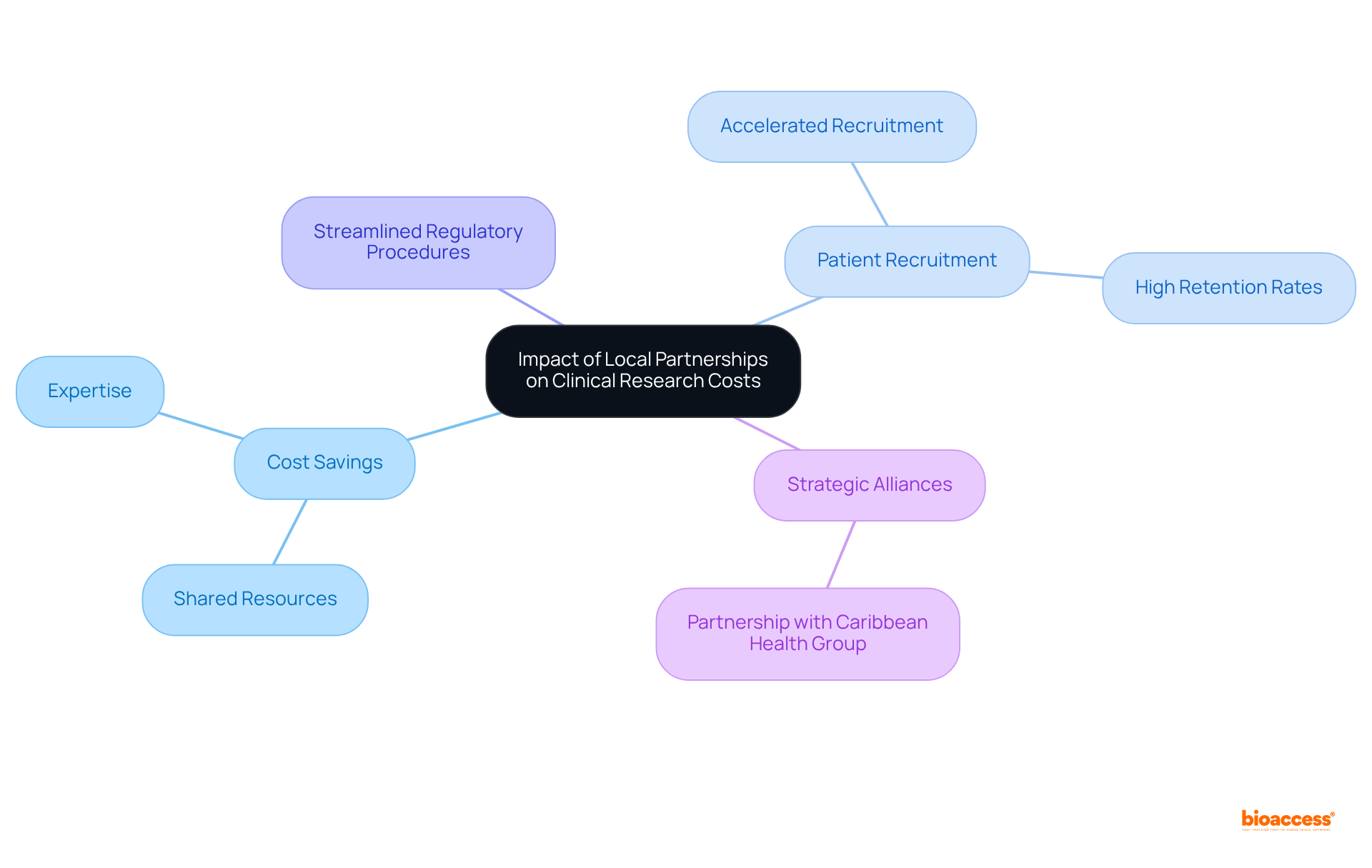
Technology expenses are pivotal in shaping the overall budget of clinical studies. Standard experiments typically incur technology costs ranging from $5,000 to $10,000, contingent upon the tools and platforms employed for data collection and management. In equivalence studies, the cost difference ordinary vs equivalence Mexico can result in expenses escalating to $15,000 or more, driven by the demand for advanced data analytics and monitoring systems. It is imperative for sponsors to meticulously evaluate their technology needs and allocate their budgets wisely to facilitate successful implementation.

In summary, the financial implications of the cost difference ordinary vs equivalence Mexico studies are substantial. The cost difference ordinary vs equivalence Mexico indicates that standard experiments generally incur lower costs, averaging between $15,000 and $25,000 per participant, while equivalence studies can exceed $30,000 per participant due to additional complexities and regulatory obligations.
Sponsors must carefully evaluate the cost difference ordinary vs equivalence Mexico when planning their studies, as it can significantly impact the overall budget and feasibility of the research. By utilizing Bioaccess's comprehensive clinical trial management services—including feasibility studies, site selection, compliance reviews, trial setup, import permits, project management, and reporting—sponsors can effectively control trial costs.
For example, compliance reviews can avert costly delays, while efficient project management ensures timely execution. This strategic approach not only helps manage expenses but also positively influences local economies through job creation and healthcare enhancements.
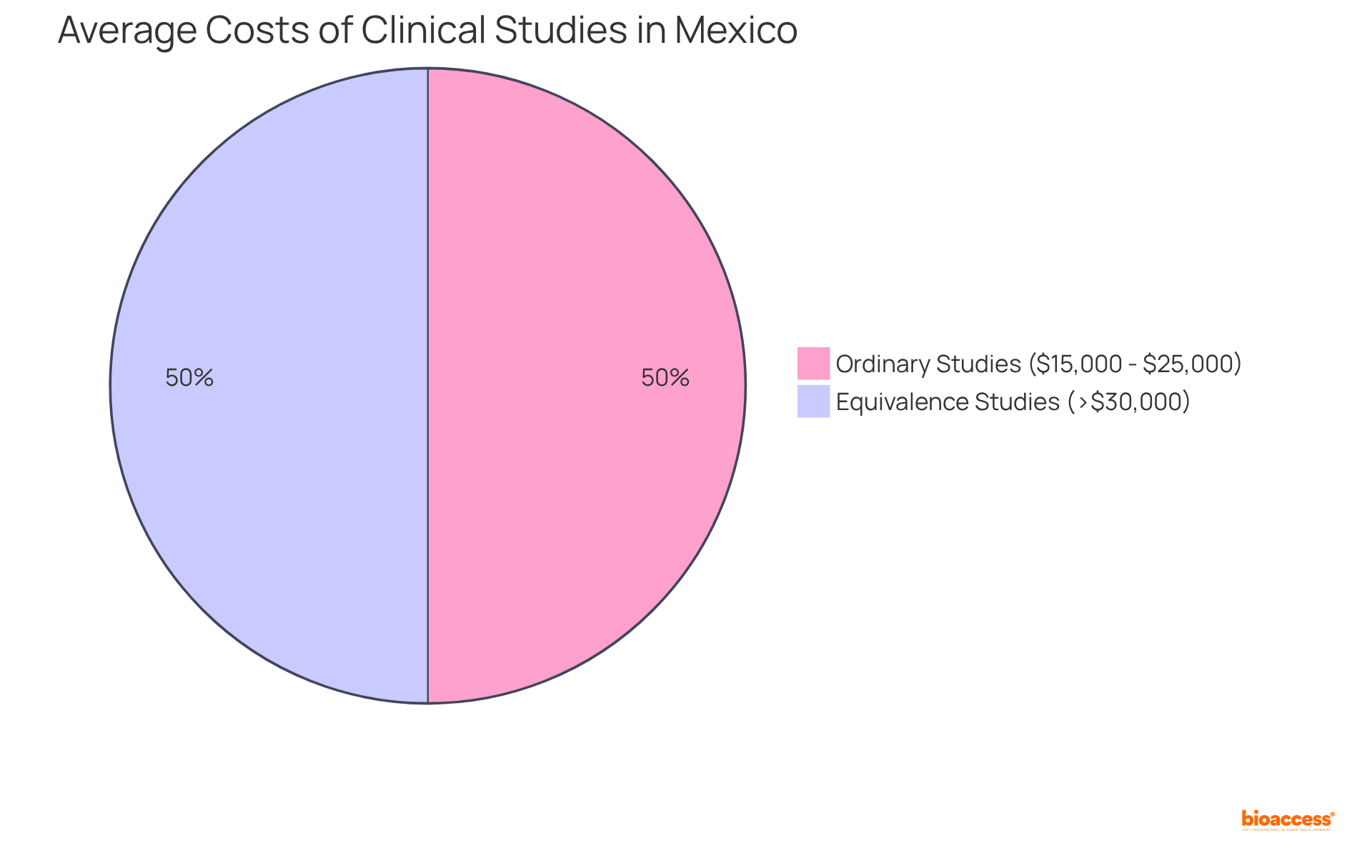
The exploration of cost differences between ordinary and equivalence trials in Mexico underscores the substantial financial implications that sponsors must navigate when planning their clinical studies. Standard trials typically incur lower costs, averaging between $15,000 and $25,000 per participant; however, equivalence studies can exceed $30,000 due to additional regulatory complexities and recruitment challenges. Understanding these distinctions is crucial for effective budgeting and financial planning in clinical research.
Key insights from the analysis reveal that various factors contribute to the overall cost differences, including:
Collaborations with local organizations, such as bioaccess®, can lead to significant cost savings and improved efficiency. By leveraging expertise in navigating regulatory requirements and optimizing patient recruitment strategies, sponsors can significantly enhance the feasibility and success of their studies.
Ultimately, recognizing the financial aspects of ordinary versus equivalence trials is essential for stakeholders aiming to maximize their research investments. A strategic approach that incorporates comprehensive clinical trial management services can not only mitigate costs but also foster advancements in healthcare, benefiting both the research community and local economies. Embracing partnerships and efficient management practices will pave the way for more successful clinical trials in Mexico, ensuring that valuable research continues to thrive.
What is bioaccess® and what role does it play in clinical research in Mexico?
bioaccess® is a company that enhances research processes in Mexico by leveraging its regional expertise and experience. It significantly reduces the time and costs associated with research studies by utilizing local regulatory speed and diverse patient groups.
How quickly can bioaccess® activate clinical trial sites?
bioaccess® can activate over 50 sites in under 8 weeks.
What is the average time for ethical approvals in Mexico through bioaccess®?
bioaccess® typically delivers ethical approvals in just 4-6 weeks, which is substantially faster than traditional markets.
What types of research does bioaccess® oversee?
bioaccess® oversees various types of research, including Early-Feasibility, First-In-Human, Pilot, Pivotal, and Post-Market Follow-Up Research.
What are the ordinary costs of clinical trials in Mexico?
Ordinary costs for clinical trials in Mexico typically range from $15,000 to $25,000 per participant, depending on the complexity of the study and the therapeutic area.
What expenses are included in the ordinary costs of clinical trials?
The ordinary costs encompass site fees, investigator payments, and patient care expenses.
How do equivalence study costs compare to ordinary study costs in Mexico?
Equivalence studies often incur higher expenses than ordinary studies, typically exceeding $30,000 per participant due to additional regulatory demands, complexities, and longer study durations.
What factors contribute to the higher costs of equivalence studies?
The higher costs are attributed to extensive patient recruitment strategies, rigorous statistical analysis, and adherence to specific regulatory standards.
What services does bioaccess® provide to manage clinical studies?
bioaccess® offers services such as feasibility studies, site selection, compliance reviews, testing setup, import permits, project management, and reporting to ensure the success of clinical studies.
Why is understanding the cost difference between ordinary and equivalence studies important for sponsors?
Sponsors must carefully consider the cost difference between ordinary and equivalence studies for effective budgeting and financial planning in clinical research.